4 Sailors’ 118 Days at Sea: Survival Tale or Hoax?
- Copy Link URL Copied!
Four sailors’ survival at sea for 118 days in an upturned trimaran ranks as one of the world’s greatest survival stories--or one of its greatest hoaxes.
If the tale is to be believed, the trimaran Rose-Noelle was flipped over on June 4 by a huge wave in a 60-knot gale three days out of New Zealand’s South Island. It made land on Sept. 30.
Despite losing up to 40 pounds each, the three New Zealanders and an American survived the stormy southern winter in good shape--such good shape that some people doubt their story.
An official investigation into whether the sailors’ story checks out--and if so, why search and rescue efforts were so far astray--is not expected to be completed for another three weeks.
The investigator has declined comment until his inquiry is completed. But Capt. Melvyn Bowen, who conducted an initial investigation, is convinced that the four are telling the truth.
After visiting the wreckage on isolated Great Barrier Island north of Auckland where the Rose-Noelle drifted ashore, Bowen said he found convincing evidence, such as marine growth on the boat’s topside. “Personally I don’t feel it is a hoax,” he said.
But some questions linger. Local yachtsmen ask why, after such a long time at sea in appalling conditions, the men had no pressure-point or salt sores, which are almost universal for a long sea voyage.
Other points baffling investigators are how two radio messages were supposedly received from the Rose-Noelle by another yacht after the flip and how the Rose-Noelle drifted from 140 miles off the east coast of New Zealand around the top of the island to the west coast.
The pattern of the currents should have taken it farther east toward South America.
Plausible explanations to these mysteries have been suggested and, although skepticism remains, it is hard to imagine a motive for a hoax.
Skipper John Glennie has signed contracts for his story but the payments are hardly likely to compensate for the $145,000 loss of his 40-foot trimaran, which was smashed to bits on rocks.
“All those who think it’s a hoax are bloody idiots,” said crewman Phillip Hofman. Asked if there was any conclusive evidence, he said: “Yeah, the fact that I know we did it and three other people did it.”
The story as they tell it is a remarkable one.
Their 118 days adrift exactly equals the time Maurice and Maralyn Bailey of England spent in a tiny life raft and dinghy after their yacht was pierced by a whale off the Galapagos Islands in 1973.
Other than the undocumented story of a Hong Kong seaman who was reported to have been picked up during World War II after 133 days adrift, it is a record for survival at sea.
Here is their story:
After the boat capsized, they spent their first day trapped in the cabin. Then they hacked a hole in the hull and spent a nightmare four months crammed in a space the size of a double mattress.
For the first month water was desperately short, augmented by soft drinks and meager rations.
But after they rigged a system for collecting rain water, conditions improved and were considerably better, although colder, than those experienced by the Baileys.
Marine growth on the boat attracted more and more fish, and a large grouper even swam into the cabin one day.
“Toward the end we were eating better than you guys at home,” crewman Rick Hellriegel told a news conference on his return.
Glennie dived into the main cabin to retrieve more and more equipment. They had a gas cooker and even rigged up a barbecue on fine days.
But relations were strained. American Jim Nalepka said tension seethed among the four, who barely knew each other before the voyage. He and Hellriegel said they never wanted to see Glennie again. Glennie said the feeling is mutual.
Battles, not physical, were fought over half a biscuit or over who could sit on the well-lit side of the makeshift cabin where reading was possible.
“At one time, one of us, I won’t mention the person, was a liability, but we worked really hard to get that person out of that position. We thought the worst, you know, slitting his throat and pushing him overboard. But we did that in jest,” Nalepka said.
Despite the friction, the four knew they had to depend on each other and gradually jelled into a team. Hellriegel said it was a great help just having the body heat of four people during freezing winter weather.
Five or six times they were forced by the weather to stay below for days on end. That’s when spirits sagged and tensions ran high.
“Cabin fever, we called it. That’s a real condition,” Nalepka said. “Fighting over a half a biscuit seems trivial but no, it was too real. It was classic what we went through.”

More to Read

How could pagers in Lebanon have been rigged to explode?
Sept. 18, 2024

Hungary refuses to pay fines for breaking EU asylum rules. Brussels is taking the money anyway

Trial of reputed Mexican cartel leader’s son offers cautionary tale for ‘narco juniors’
Sign up for Essential California
The most important California stories and recommendations in your inbox every morning.
You may occasionally receive promotional content from the Los Angeles Times.
More From the Los Angeles Times

World & Nation
Hezbollah head strikes defiant tone after ‘unprecedented blow’

Robert F. Kennedy Jr. is being investigated for allegedly collecting dead whale

A U.S. news site that covers Haitian Americans is facing harassment

Huge python grabs Thai woman in her kitchen, squeezes her for hours before she can be freed
Most read in world & nation.

China’s flagging economy -- and Kanye West -- give each other a helping hand

French man admits in court to drugging his wife so he and dozens of men could rape her
Sept. 17, 2024

Leaders of ‘Uncommitted’ movement won’t endorse Harris but warn against Trump

Sex tourism in Indonesia sells itself as Islamic temporary marriage
Sept. 11, 2024
- THE PRINCESS PASSPORT
- Email Newsletter
- Yacht Walkthroughs
- Destinations
- Electronics
- Boating Safety
- Ultimate Boating Giveaway

- Cruising and Chartering
119 Days Upside Down
- By Yachting Staff
- Updated: August 12, 2010
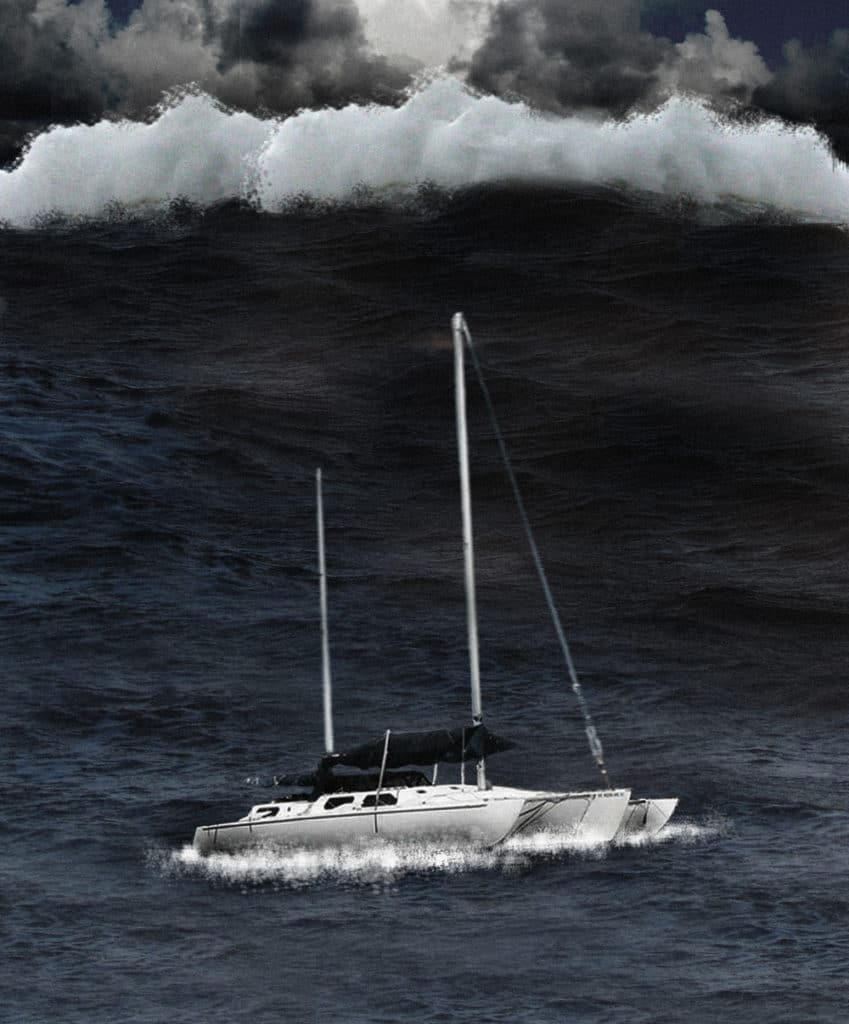
Horror makes a noise: a roar, like a deep rumble of thunder rolling across the heavens. It was just before sunrise when John Glennie heard it coming—a phenomenal freak wave more than 16 metres high was bearing down on his small yacht like a damburst of water. It was horrifying.
Within seconds the wave had exploded onto the scene, and it dealt with the yacht like a huge tsunami smashing its way across a low-lying island: Anything in its path was destined to be bulldozed out of the way. Suddenly, after three days of battling this ferocious storm off New Zealand’s east coast, the worst fears held by Glennie and his three crew were about to be realised. The 41-foot-long trimaran Rose-Noëlle , which had been lying beam-on to the seas, was engulfed by an avalanche of white water, pitched to 90 degrees then flipped upside down.
Inside the yacht it was as if a house had been inverted in an earthquake. There were shouts amid the darkness as the crew struggled to free themselves from the debris that had crashed down on them. It was a vice-versa world to what they had known a few minutes earlier: Their ceiling was now their floor. Everything that had been below them was now above their heads, and there was a cold ocean swirling into their habitat. Where would it stop? Were they going to sink?
When this calamitous situation stabilized there was just darkness and near silence. Being upside down meant they had been soundproofed from the howl of the storm that raged outside. Before long the water level settled. They were still afloat, and destined to stay that way until…whenever!
For 19 years, Glennie had dreamed of this voyage from his native New Zealand to Tonga and onwards to other enchanting islands in the South Pacific. He was a highly experienced offshore yachtsman with more than 40,000 cruising miles to his credit, and that included sailing in the Roaring Forties. He had designed and built Rose-Noëlle in Sydney a few years earlier based on this experience.
It was now 1989 and his plan was to escape the clutches of the worst of the New Zealand winter, but as the departure date of 1 June drew closer, his frustrations associated with crew selection and the general preparation of the yacht were rising proportionately. His initial desire was to have friends join him for the cruise, but when those friends, who were all good sailors, advised at the last minute they couldn’t make the trip he opted for three people he barely knew, and they had little or no sailing experience. His first recruit was 41-year-old Phil Hofman, who was keen to try bluewater sailing. Surprisingly, he had never ventured in any way outside New Zealand even though he lived aboard his yacht in Picton. Next came another New Zealander, Rick Hellreigel, 31, who had heard that Glennie was looking for crew. He wanted to erase the memories of a disastrous cruise to Fiji some years earlier by giving offshore sailing another chance. Jim Nalepka, 38, was an American cook and the third crewmember to sign on. Even though he had never been sailing, he jumped at this opportunity after Rick, who was a close friend, told him that he was going to make the voyage and suggested they go together.
This happened just a few days before the planned departure, and it was so unsettling for Glennie that, even on the day he was due to cast off, he was wondering if he should put to sea. The thought was also influenced by an unfavourable and stationary weather pattern to the east of New Zealand. However, a last-minute analysis of the conditions convinced him that, while the first stage of the passage would be uncomfortable, it was safe to set sail.
Cook Strait provided a favourable wind and soon Rose-Noëlle was scooting along at up to 16 knots, a speed that impressed all on board. As darkness settled, the wind increased in strength and the seas grew accordingly. It quickly became apparent that it would be a long night ahead: Glennie would have to be alert at all times simply because of the inexperience of his crew. There would be no “breaking-in” period in relatively dormant weather conditions. Even so, he established a watch system where everyone had a two-hour stint on deck and four hours below.
The wind remained strong from the northern sector overnight so Glennie continued on a course away from the coast, a course which he maintained for the next 24 hours. He noted that the barometer was dropping—a sign of deteriorating weather.
“As the day wore on, the wind strength grew and so did the alarm of the crew. I reefed down again and finally dropped the mainsail altogether. Rose-Noëlle was running with the waves under a partly furled headsail, but she wasn’t yet surfing. The conditions were no different to those I had sailed through many times before.
“Phil was on the wheel but was having trouble steering. He seemed really frightened by the strength of the wind and the speed we were doing, yet of the three crew he had the most experience as a sailor. I took the wheel, and the steering felt fine to me, but Phil’s alarm had unsettled the others.”
Rick and Phil called on Glennie to launch a small sea anchor off the stern to help reduce speed, even though he didn’t feel there was any reason for concern: “It was the beginning of a series of events over which I should have taken more control. It was my boat, and I was by far the most experienced person on board.”
While Glennie was convinced they were safe, the anxiety coming from what was by then an increasingly vocal crew saw him acquiesce to their demands. When the sea anchor was set they were 140 miles offshore and still south of the 40th parallel. This was the Roaring Forties— the breeding ground for some of the worst storms imaginable.
From this moment the problems compounded. The gale-force winds strengthened and the breaking seas increased to alarming proportions. Enough, thought Glennie: It was time to lower all sail and set the large parachute sea anchor he had bought for such a situation. It would hold the yacht’s bow into the seas while they rode out the storm.
When this was done, the crew were able to retire to the cabin below, climb into their bunks and wait. For them, there was nothing else they could do.
During the early part of the evening Glennie sensed that the motion of the yacht had changed, and it concerned him. He donned a safety harness, clambered on deck and quickly realised that the parachute anchor had failed. Rose-Noëlle was lying beamon to the seas—the most vulnerable attitude she could take—but Glennie remained confident that even in such extreme conditions, Rose-Noëlle would never turn over. In fact, he was so confident about the stability of the design that he hadn’t fitted escape hatches in the main hull when he’d built the yacht—hatches that would allow the crew to get out in the event of a capsize.
The crew lay in their bunks listening to the fury of the storm that raged outside. The wind was gusting at between 50 and 60 knots and the yacht was being rocked violently from side to side each time the three hulls crested a wave. The atmosphere in the cabin was full of tension and dread, so Glennie tried to calm the situation by turning on the radio and tuning into some soothing music. However, Phil remained at the opposite end of the relaxed scale: “He had steadily worked himself into a panic. Nothing Rick, Jim or I could say or do would calm him down. He was absolutely convinced the boat was going to capsize. He was terrified and at times close to hysteria. He would lie for a few minutes in his bunk, leap up, peer out of the window, and call out, ‘We’re going to flip over. We’re going to flip over.’”
Between 4 a.m. and 6 a.m. on 4 June, the wind began to abate and while the crew were convinced they were seeing the end of the storm, Glennie knew otherwise. A rapid reduction in wind strength was no guarantee that the waves would also abate. A short time later he knew he was right. He heard the roar of what would be their final wave.…
“The death of Rose-Noëlle came quickly. The wave hit her like a freight train roaring out of the darkness towards us, the terrified passengers stalled in its path and trapped inside. There was nowhere to go, nothing we could do. We had only two or three seconds to be frightened, for our guts to clench in that final knot of fear. The giant wall of water came out of the darkness without warning, drowning out all other sound. Its roar overpowered the scream of the wind generator outside, the howl of the wind, the crashing of sea against the trimaran’s hull and decks. It drowned out the sound of the radio playing in the cabin. It drowned out the heartbeat thudding inside our heads.
“The wave hit Rose-Noëlle side-on, and she did not hesitate. Six and a half tons of boat flipped over sideways as if it were a toy plucked from a bath by a child’s hand and dumped unceremoniously on its head. It was 6 a.m., 4 June 1989, mid-winter in New Zealand and still dark.
“The capsize toppled me onto the roof of the cabin above the dinette seat where I had been curled up under a rug, listening to the storm. Rick and Jim were lying in their sleeping bags on the opposite starboard double bunk. When the wave hit they hurtled up in the air and crashed down onto the dinette table below. They landed in a bruised heap on the skylight hatch in the ceiling. I crawled across the roof—now the floor—to join them, water swirling up around our legs.”
With the yacht inverted, its attitude on the sea surface meant that the aft cabin, small as it was, would have to become their principal place of residence as it was the one place where they could build a platform above water level and create a bed. It would be an oppressive, kennel-like environment but in that situation it was their only option.
The natural forces that came with the capsize and the incessant surge of water within the hull created a hellish environment for them in every sense: “The water inside the main cabin had quickly turned to a murky soup after we capsized. A large container of muesli had spilled everywhere and a five-kilo bag of wholemeal flour had split open when it toppled out of a locker beneath the dinette seat. At one stage, Phil watched his camera float past in its case and out through the companionway. Much later he cursed himself for not scooping it up because tucked inside the case was $400 in cash and his new passport.”
Ingenuity was the call of the day as the four inverted sailors struggled to build their new abode. They used blankets, wet weather gear, boots, clothes, cupboard doors and even two dozen toilet paper rolls to create their version of an island bed above water level. Then, with it complete, they crawled one by one through the 23-inch by 23-inch tunnel into the tiny cavity to lie down: “Everything, including our clothes, was soaking wet. We huddled like sardines in a tin in a space as small as a queen-size bed. We had to lie facing the same way, nestled against each other like spoons, wet spoons in a cutlery set. Above us we had just 7 inches of headroom. It was like being trapped in a dark wet cave. Suddenly I remembered the words of a clairvoyant I had visited shortly before leaving on this trip: (You will have an adventure in an underground cave.) Was this it? I wondered.”
Their next two priorities were to search for and secure all the food that could be found in the boat and activate their EPIRB distress beacon. Before long their cache included some tinned food, a three-litre cask of orange juice and soft drink. Rick revealed he had diving skills when he found his way to the submerged fridge and claimed a block of cheese, some butter, two litres of milk and two legs of smoked ham.
“It was a bizarre picnic,” said Glennie of their first meal in 24 hours, “lying soaking wet in the dark with a sickly smell of battery acid still in the air, listening to the fury of the storm. We sliced off pieces of ham with my fishing knife and ate it with cheese and English mustard.”
Incredibly, the thought of rationing their supplies did not go remotely close to entering their minds as they were completely convinced they would soon be rescued. To ensure this would happen, Phil and Glennie moved into the flooded forward cabin where, using what tools they could find, they hacked a hole through the side of the hull leading to the underside of the wing deck that extended between the main hull and outer fl oat: “The toilet was in the way and, as we couldn’t think of a use for an upside-down porcelain pan, we smashed it out with a hammer.”
The EPIRB, which was attached to the side of the hull with the aerial poking outside, was activated and much to their delight the blinking red light confirmed an SOS message was being transmitted to the outside world. It would only be a matter of time before a commercial airliner flew overhead and received that signal—or at least they thought that’s what would happen.
After 40 days of living their nightmare, the four were still managing to survive on food and equipment they were regularly able to scrounge from the submerged lockers within the yacht. For the most part their emotional stability was retained due to a firm belief that they would be rescued at any moment, although Phil maintained his doubts.
However, despite this belief, the three crewmen told Glennie that they wanted to erect a jury rig atop the main hull of the upturned yacht and try to sail back to land: “We had several arguments on this subject because I was convinced our priority was to remain safe and well, and to concentrate on survival, using the resources aboard the boat until we were spotted by a ship or found land. That meant building a reliable water-catchment system and establishing a regular supply of fish, something at which we had been unsuccessful so far.
“To me, the water-catchment system was our top priority as our precious supply of soft drink dwindled and we struggled to survive on three ounces of fluid a day.”
They kept a record of the number of days they had spent drifting by etching marks onto the side of the aft cabin. September 11 was a red-letter day: 100 days since the capsize. They agreed that the time had passed faster than they would have expected.
“All four of us had lost a lot of weight, and Rick and I were particularly thin.
“Phil had lost his big paunch, and in its place were handfuls of skin hanging down from his stomach. When he stripped off to dry out his clothes, he was quite a sight, with his long hair and beard, his sagging skin, and a tattoo of his wife’s name, Karen, on his shoulder.
“Overall we had been blessed with good health during our time adrift. Although we were cold and wet for much of the time during those early days, none of us caught colds. Rick had not suffered from asthma nor been even the slightest bit wheezy. He was dismayed to find that within a week of returning to land he once again needed his inhaler. In the early days Phil used to need medication for his heart condition, but he eventually stopped taking that. Perhaps he’d taken it more from habit than anything else.”
Despite the length of their ordeal and the stifling environment they were living in, the only medical condition that really troubled them was the occasional bout of constipation. Surprisingly, it wasn’t until after the 100th day had passed that they recognised their energy was on a more rapid decline. They were losing muscle tone and looking terribly bedraggled thanks to their gaunt physiques, long and unkempt hair and straggly beards.
“On the afternoon of day 116…I looked up to see a plane flying overhead, low enough to see and hear clearly. We estimated it was about 15,000 feet up and still climbing. It flew directly overhead, and I took a bearing. It was heading magnetic north.”
The four lost souls then spent hours deliberating on how far an aircraft would travel to reach 15,000 feet and decided that it was 80 miles. They also convinced themselves that the aircraft could not have come from Wellington or Christchurch. Taking this information and the direction of their drift they then positioned themselves on a small chart they had retrieved and realised they were heading towards the Hauraki Gulf, which was an outer area of Auckland harbour.
Incredibly this “guess-timation” was almost spot-on because on 28 September they sighted land. Rick, who was perched on the top of the upturned main hull, was transfixed by a dark cloud formation on the horizon which he was convinced was not moving or dissipating. Soon after, Jim joined him and he too noticed, without any prompting from Rick, what appeared to be land low on the horizon. When Glennie went up on deck Rick said casually, “Can you see anything out there?” while pointing in the general direction of the object.
“I spotted the shape instantly. It was a dark image within the cloud, and I knew what Rick and Jim were thinking. ‘It certainly looks like land,’ I replied. ‘Let’s have another look in 10 minutes and see if it’s changed shape.’ It didn’t move, and Rick and Jim told me they had been watching it for a while. When Phil climbed up on deck he stood up and looked around. ‘Land!’ he cried out. ‘That’s land!’”
Excerpted from Hell on High Seas by Rob Mundle. Used by permission of HarperCollins Australia, www.harpercollins.com.au
- More: Cruising
- More Cruising and Chartering
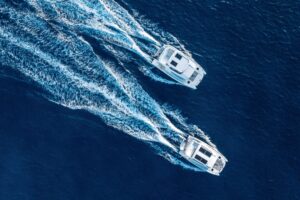
Cruising Made Easy with The Moorings
Top Bar Harbor Maine Sights For Visiting Cruisers
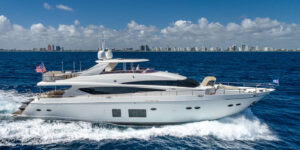
Spend Thanksgiving on a Yacht
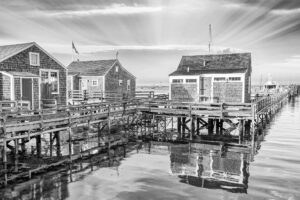
Cruising into Adventure: Discover Nantucket
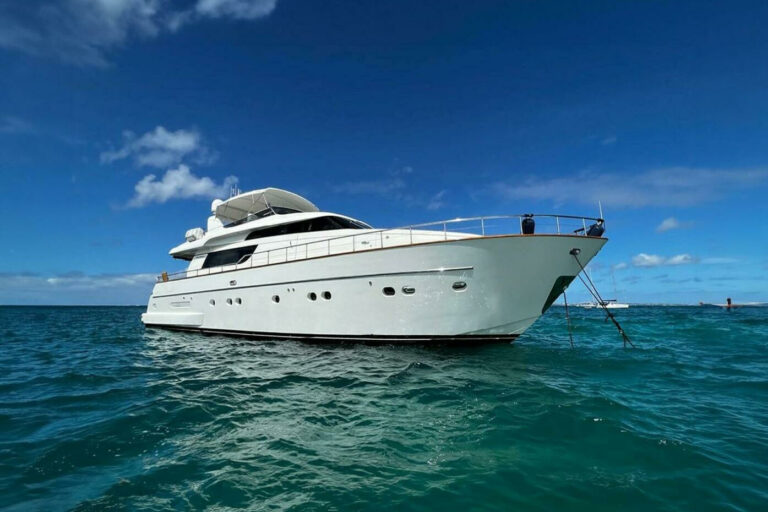
Caribbean Cruiser: Sanlorenzo SL72 For Sale
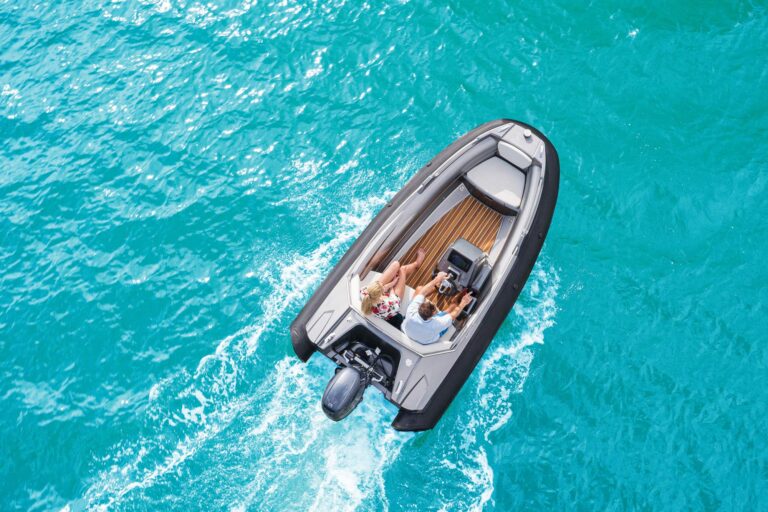
Customize Your Ride: The Argos Nautic GT14 RIB Tender
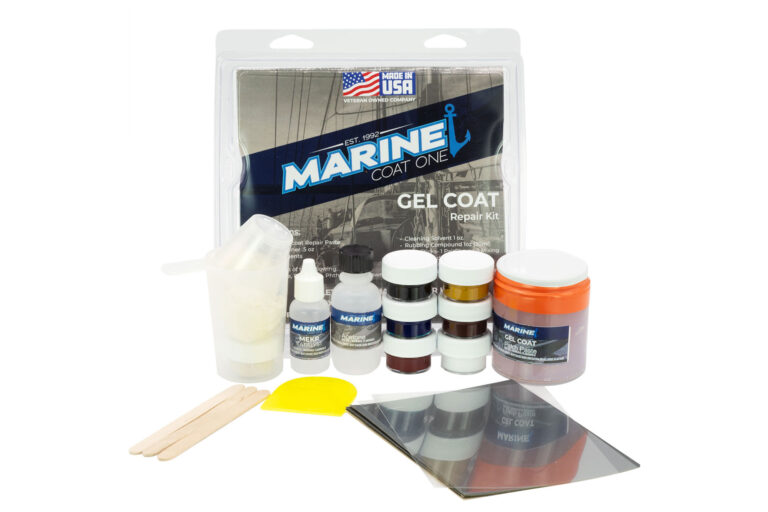
How To Repair Minor Fiberglass Damage on Your Boat

For Sale: 2004 Cheoy Lee 81 Sport Yacht

- Digital Edition
- Customer Service
- Privacy Policy
- Terms of Use
- Email Newsletters
- Cruising World
- Sailing World
- Salt Water Sportsman
- Sport Fishing
- Wakeboarding
- Entertainment
- Celebrity News
- Food & Drinks
- Relationships
- Diet & Nutrition
- Body & Fitness
- Expert Advice
- Pregnancy & Birth
- Fashion News
- Beauty News
- Latest News
- Competitions
- Homes To Love
- Home Beautiful
- Better Homes and Gardens
- Hard to Find
- Your Home and Garden
- Shop Your Home & Garden
- Now to Love
- Now to Love NZ
- That's Life
- Women's Weekly
- Women's Weekly Food
- NZ Woman's Weekly Food
- Gourmet Traveller
- Bounty Parents
- marie claire
- Beauty Heaven
- Beauty Crew
- Fashion & Beauty
The Rose Noelle: 25 years on, a wife’s true story
Karen Hofman lost her beloved husband once for four long months. But now he is lost to her forever. Karen is coming to terms with the death of Phil Hofman, who passed away in March after a heart attack.
In 1989, the father of five was involved in New Zealand’s most gripping maritime survival story.
Along with John Glennie, Rick Hellreigel and Jim Nalepka, Phil was shipwrecked when their yacht, the Rose Noelle, capsized three days after it set sail from Picton for Tonga. Drifting at sea for a harrowing 119 days, the tale of how the four strangers survived the elements – and each other – has become legendary.
Many thought the men had perished, but Karen knew in her heart that her husband was still alive. She recalls how she made a pact with God, promising that if Phil was saved, she would embrace and accept him, even if he returned a changed man.
The men, who survived in a tiny area the size of a queen-sized bed, were eventually rescued when the wreckage of the Rose Noelle crashed ashore in a remote part of Great Barrier Island.
Native ad body.
.jpg?resize=380%2C285)
Animal communicator put to the test
.jpg?resize=380%2C285)
Quadruple amputee Charlotte comes of age
“Many days had passed,” recalls Karen, reflecting on her husband’s disappearance. “Behind the scenes, people were having conversations, saying they needed to tell me to face the reality that my husband was not coming home.
“They told me a memorial service needed to be organised. But I had to see the proof – I needed to see the wreckage. I wasn’t going to give up hope.”
In June, it will be 25 years since the famous ordeal garnered worldwide attention. Karen says it’s a fitting time to pay tribute to Phil, a man she loved dearly, one who many thought would be lost at sea forever.
“He wasn’t a glass half full kind of person. He liked the glass overflowing and being filled up again. He had an infectious energy, which I loved,” says Karen, who resides in the South Island town of Kurow. “Going through what I did during the Rose Noelle disappearance has probably prepared me for Phil’s death. I’ve already experienced missing him. But this time it’s harder, because I know he’s never coming back.”
Karen met Phil when she was 11 years old and growing up in the Auckland suburb of Manurewa. She was immediately drawn to his charm and zest for life. The pair married when Karen was just 17 and they started a family together. By the 90s, they were living on a boat and sailing around New Zealand with their children.
While docked behind the Rose Noelle in Picton, the opportunity arose for Phil, who was a builder, to join the boat’s captain, John Glennie, on a voyage to Tonga.
“Phil was always looking for adventure,” Karen explains. “He expressed interest and was soon sailing the seas with John and two men, Rick and Jim, who John found by placing an ad at the local backpackers.”
Phil, who had had triple bypass surgery three years earlier, was looking forward to the trip, but three days into the voyage, a huge wave washed over the 12.5m yacht, tipping it upside down and trapping the men inside.
Half submerged under water, the men learned to survive in near impossible conditions. Hunched together in the upturned yacht, the men rigged up a water catchment system so that they could drink. John dived into the submerged cabin, feeling his way around for food. And the boat eventually grew barnacles and became a floating reef, so they were able to catch fish.
Karen says Phil often spoke about the horrifying experience, and told her that thinking about his family is what kept him alive.
“He wondered if he would see his children again. He realised he had a lot to lose.”
Surviving the physical elements was hard, but surviving each other – four men who had little in common – proved to be just as difficult. They realised that to get through the long days and nights, they had to work as a team and tolerate each other.
“It was wet and cold. They were stuck in a small space and were hungry and thirsty. It would be tough for any relationship to survive that,” Karen tells.
The men had no way of knowing if they would be rescued – their emergency beacon had not been picked up and eventually stopped working.
But they were overjoyed when the Rose Noelle eventually washed up in a secluded area of Great Barrier Island.
After making it to shore and spending a night in the bush, the men broke into a bach, where they cleaned up, shaved, trimmed their hair, changed into clothes they found and cooked themselves a meal, before sleeping through the night.
The next day, when they sought help at a neighbouring home, the group’s reappearance sparked a media frenzy. Every news outlet wanted to tell their story, but because they appeared clean-shaven, their account was originally met with suspicion, with many claiming it was a hMax.
Rumours even surfaced that the men were covering up a drug trafficking operation to South America. However, an investigation found convincing evidence that the men’s story was true, especially when marine growth was found on the boat’s topside.
Karen was thrilled to have her husband back. She smiles, recalling that his first words to her were, “Hi, honey, I’m home.”
But the return wasn’t all plain sailing – Karen noticed a significant change in Phil.
“Emotionally and mentally, he thought it hadn’t affected him at all, but he went off the rails a bit. He thought he was invincible. I imagined he would come back changed for the better – that he would have had an epiphany. He didn’t believe in God, but I thought having had his life spared, he would have more faith. He didn’t. The attention went to his head and he went wild.”
A year after his return, the couple had their fifth child – a daughter they named Phillippa. Karen says being a father again helped Phil settle more – even though he strayed, enjoying a liaison with another woman.
“I had made a deal with God,” Karen reiterates. “However he came back and however he was would be okay with me. I had to keep my end of the bargain and be happy with Phil as he was.”
In recent years, Phil became ill with heart disease, which he succumbed to on March 23. By then, the Rose Noelle drama was a distant memory for him, despite all the TV documentaries, books and plays based on the amazing survival story.
Karen says that after the disaster, Phil lost touch with the other three men. John moved to the US, Rick died of a brain tumour two years after the boat accident, and Jim returned to the US after helping to nurse Rick as his brain tumour progressed. Jim later came back to New Zealand and qualified as a nurse.
Karen says she and her five children, Elizabeth (48), Michelle (46), Chantelle (40), Dion (38) and Phillippa (23), miss Phil dearly. Rod Stewart’s song Sailing was played at his funeral and Karen still sleeps with his unwashed jersey – his scent keeping memories alive.
She says she is grateful she got to spend so many more years with Phil, after coming so close to losing him at sea.
“I loved him. For me, there was nobody else in the world. He was the father to my children and my best friend.”
WATCH: A scene from Abandoned
The Rose Noelle crewmen finally reach dry land
Related stories
Get nz woman’s weekly home delivered .
Subscribe and save up to 29% on a magazine subscription.
- Explore Tūhura
- Collections Ngā Kohinga
- Interviews Ngā Uiuinga
- Profiles Ngā Tāngata
- Watch list Rārangi Mātakitaki
We're sorry, but something went wrong
Please try reloading the page
We're sorry, but your browser is unable to play this video content.
If this continues please try upgrading your browser or contact us for assistance.
We're sorry, but this video is currently unavailable on mobile.
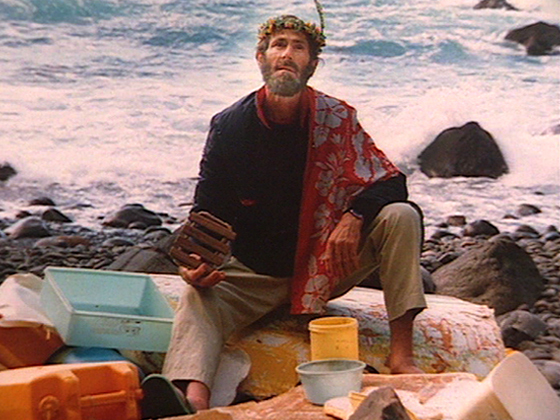
A full length television programme.
The credits for this television programme.
Back From the Dead - The Saga of the Rose-Noëlle
Television (full length) – 1996.
- Related videos
- Comments (7)
This documentary tells the story of four men men who survived 119 days adrift at sea in an upturned trimaran. John Glennie's boat Rose-Noëlle capsized in the Pacific in June 1989, and washed up four months later on Great Barrier Island. Director Mark Beesley mixes raw interviews and spare reenactments to convey the physical and emotional ordeal; the quartet were sometimes trapped inside a cramped section of the boat for days on end. The epic survival-at-sea tale won Best Documentary at the 1997 New Zealand Television Awards. The story was later retold in 2015 telemovie Abandoned .
Key Cast & Crew

Frank Whitten

Mark McNeill
Interviewer, Research

Mark Beesley
Director, Writer
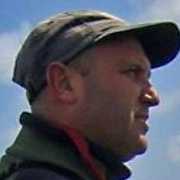
Mark Everton
Producer, Writer

John Harris

Russell Shipman
Produced by.

Greenstone TV
Acknowledgements
Made with funding from NZ On Air
- great barrier island
- heather hellriegel
- james nalepka
- jim nalepka
- john glennie
- karen hofman
Documentary
More Information
NZ Herald article on the Rose-Noëlle saga, September 2009
Article on various accounts of the Rose-Noëlle saga, Up Country website, May 2014
Rose-Noëlle author Jane Phare interviews survivor John Glennie, The NZ Herald, October 2009
Short clip from a TVNZ news report on efforts to find the Rose-Noëlle, Te Ara website
Interview with the cast of a TV movie about the Rose-Noëlle, Stuff, August 2015
If you liked this, you might also like...
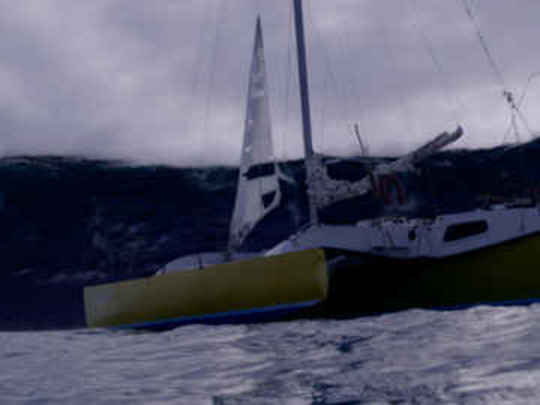
Telemovie based on the Rose-Noëlle story
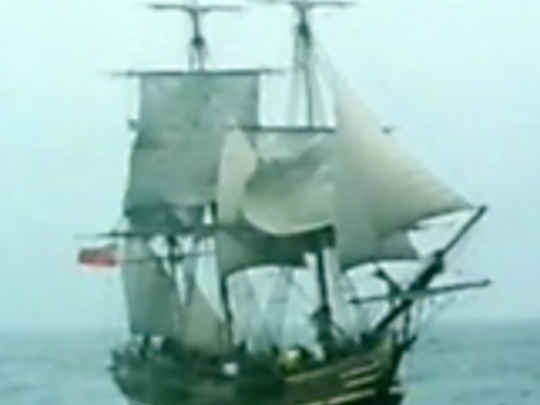
A Fated Ship
Features Captain Bligh’s remarkable survival at sea story
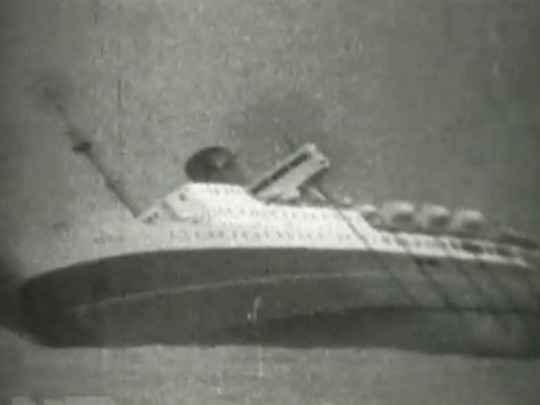

NZBC Classics - Wahine Disaster
The 1968 sinking of the Wahine ferry in Wellington Harbour

Do or Die - Lost in the Bush
Another survival story from company Greenstone TV
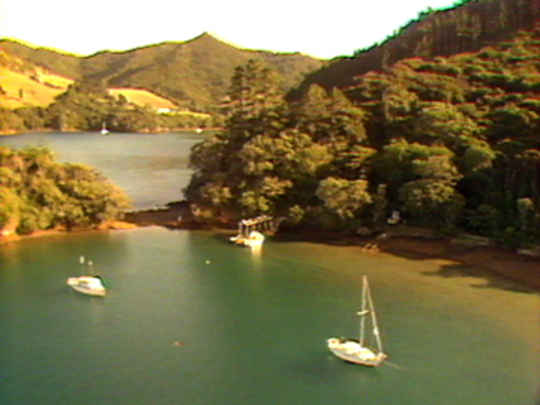
Weekend - Great Barrier Island
A less dramatic visit to Great Barrier Island
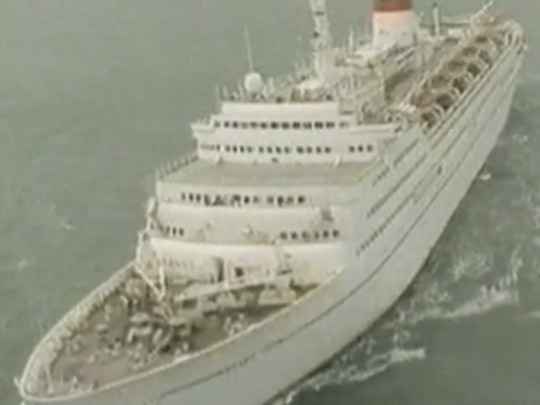
Destination Disaster: The Sinking of the Mikhail Lermontov
The sinking of a Russian cruise liner in the Marlborough...
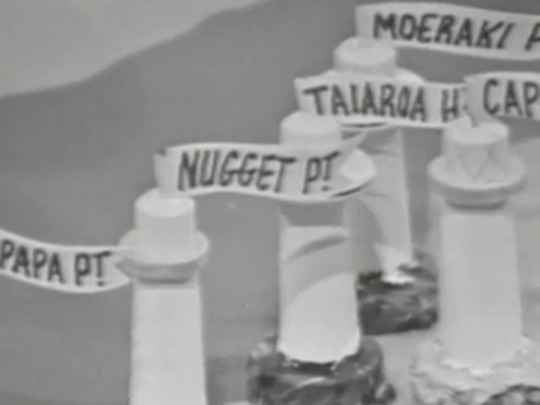
Spot On - First Episode
Episode on lighthouses
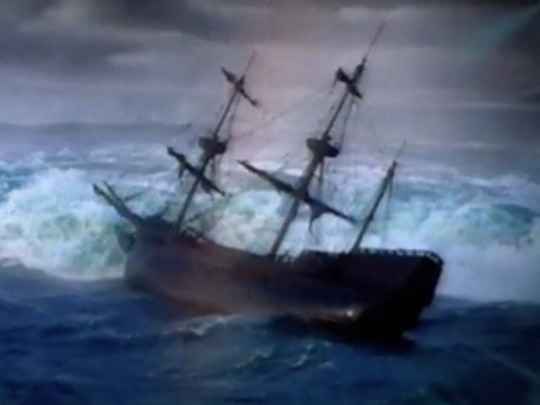
Shipwreck - The Tragedy of the Boyd
Greenstone series on famous NZ shipwrecks

A Gin Wigmore music video entitled S.O.S

Savage Honeymoon
Mark Beesley also directed this Westie feature film

Double Booking
Mark Beesley also directed this award-winning romantic tale
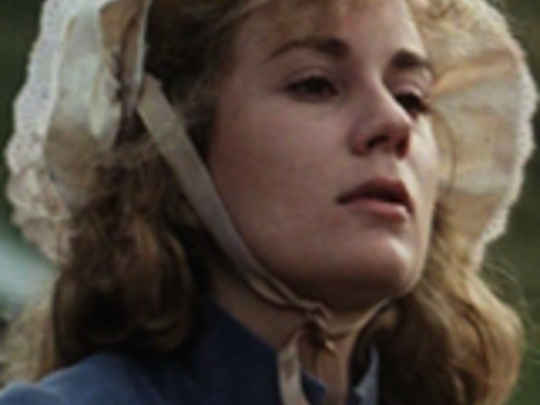
Heart of the High Country - First Episode
Narrator Frank Whitten plays the unsympathetic husband in...
Share this video
- Embed this video
- Badge this video
Which size would you like?
Copy this code and paste it into your website.
Which clip would you like to embed?
Start clip at:
Beginning This time: eg. 1m7s
At end of clip:
Continue to next clip Stop playing
Would you like the clip to be a fixed size or responsive?
<!-- Start NZ On Screen - Back From the Dead - The Saga of the Rose-Noëlle - Clip: Back From The Dead - The Saga of the Rose Noelle Size: 585 by 410 --> <iframe width=" 585 " height=" 410 " style="width: 585px " src=" https://www.nzonscreen.com/embed/ac562837fee6cbe8 " frameborder="0" allowfullscreen ></iframe> <!-- End NZ On Screen - Back From the Dead - The Saga of the Rose-Noëlle - Clip: Back From The Dead - The Saga of the Rose Noelle -->
<!-- Start NZ On Screen - Back From the Dead - The Saga of the Rose-Noëlle - Clip: Back From The Dead - The Saga of the Rose Noelle (credits) Size: 585 by 410 --> <iframe width=" 585 " height=" 410 " style="width: 585px " src=" https://www.nzonscreen.com/embed/407e8a9eedc26719 " frameborder="0" allowfullscreen ></iframe> <!-- End NZ On Screen - Back From the Dead - The Saga of the Rose-Noëlle - Clip: Back From The Dead - The Saga of the Rose Noelle (credits) -->
Don't have an account? Create an account here

Coppercoat: The environmentally sensitive antifoul choice *sponsored post*

Yachting Monthly sponsors the Chichester Marina Boat Show and Watersports Festival

Round the Island Race 2019: Entries open

Düsseldorf Boat Show 2019: Fairline announces yacht line-up

Düsseldorf Boat Show 2019: Bavaria to showcase its complete range of motoryachts
- Subscribe Now
- Digital Editions
119 days lost at sea
Sailor John Glennie shares with YBW what it’s like to survive an extraordinary journey of shipwreck, storms and starvation

In a survival situation, knowledge, attitude and being prepared are paramount. If you are prepared, that pretty much takes care of the attitude – almost.
At 40.5 degrees latitude S, 179 degrees E longitude off New Zealand in the middle of winter we should have been heading for Chile through the Great Southern Ocean.
A massive storm on the east coast of New Zealand’s north island created a 60ft vertical wall of water that turned our boat upside down.
My 40ft trimaran Rose-Noelle capsized in a never-never land where no hope of survival existed. No ships, no planes and no fish. It’s a marine desert. Normally no one escapes capsizing down there. There virtually is no hope. On top of that, no one knew where my three-crew members and me were.
We spent the next four months drifting in what should have been famously strong winds and currents in the Great Southern Ocean – known as the Roaring Forties. They should have taken us across 5,000 miles of violent waters to Chile in South America but the wind, miraculously, turned around and brought us back to New Zealand.
To escape it all, I would go to that place in my mind or imagination where I was already out of it and snuggled up in my bed at home. I had learnt to do it during cold winter nights out training on my bike for road cycling. I would hit ‘the wall’ and still have 10 miles to get home.
I did it not because I had been taught it, but because it took me away to another place and the miles went by unnoticed.
I had been doing it the night before we capsized, only four days into our journey to Tonga, and did the same thing through the first 40 days adrift.
We had no fluid; apart from the four ounces of 7Up and Coca Cola we had a day – enough to fill a small spice jar.
It rained on the 40 th day just after I had made a water catchment system. Then another 40 days with as little as two teaspoons of cold uncooked rice a day for food.
With our boat having been upside down the entire time she started to turn into a floating reef and the mollusks that had grown attracted Kingfish, which we were able to gaff.
Towards the end of the third 40 days, we seemed to have become more in harmony with our environment for I wrote in my log: “Well, it’s 116 days today. Is that enough? Can I go home now?”
A few days later we were out of it.
In that whole four months adrift I never had one doubt I wouldn’t get out of it. The only thing I didn’t know was how. We survived 119 days on the upturned Rose-Noelle before finally being blown ashore on Great Barrier Island near Auckland.
My best advice to prepare for a situation such as mine is to lie down in your bed and turn your boat upside down. Where would you sleep? Will the water in the tanks leak out the air breathers?
Make sure you fasten the hatches inside your vessel, think about them upside down and tie everything on strings so they don’t wash away, even the dish rags.
And finally, stay with the boat.
You can buy John Glennie’s new book ‘ Playboys of the South Pacific ‘ here .
Related articles
- Gallery: Rose-Noelle’s tale of survival
- Capsize survivor urges continued search for missing yacht Nina
- New satellite images may have found missing schooner
Mini Mysteries: Epic feast followed Rose-Noelle wreck
Rose Noelle skipper John Glennie sits among wreckage of his trimaran with some of the items recovered along the rugged south-eastern coast of Great Barrier Island. Photo / Paul Charman.
Many odd things occur on Great Barrier Island, which is great when you're writing a series called "Mini Mysteries".
During five days on the island earlier this month, I scribbled down locals' accounts of prehistoric giants, ghost sightings, modern-day miracles and a murder most foul.
As the Sealink Car Ferry cast off from Wynyard Wharf on a calm and fine Sunday morning, I sat in my borrowed Mini Clubman 5-door and planned visits to sites where arcane, odd or even disturbing things are said to have occurred.
Of course, the "Major Mystery" of life on the Barrier is how its people do so well, despite challenging effects of isolation, indifference of mainland officialdom and destructiveness of natural disasters.
A few hours after landing at Tryphena I nosed the Mini into a driveway in Goosberry Flat, to discuss my first mystery.
Robyn Joynes made me a cuppa, then recounted a day 25 years ago, when she sited the upturned 6.5-tonne yacht Rose-Noelle.
It was to be a fairly unsanitised account of this famous survival story.
Robyn had gone to check on the house belonging to her ex-husband and good friend John Scimgeour, who was working off-island at the time.
Robyn noticed a strange-looking object out at sea, likely the first time anyone had sited the trimaran after it turned-turtle during a voyage to Tonga, 119 days previously.
After drifting an estimated 3000 km, the Rose-Noelle was cast up on to a reef off Little Waterfall Bay.
Inside the upturned vessel, skipper John Glennie and Jim Nalepka, Phillip Hofman and Rick Hellreigel, were just skin and bone.
For months they'd huddled together in an area the size of a queen-sized bed in the partially flooded upturned cabin, living off meagre stores, fishing and catching rainwater.
The adventure became one of the world's great maritime survival tales.
It has been the subject of at least two books, a stage play and a television documentary, while yet another movie project begins in filming March.
The dramatised production, to be called "Abandoned", will be centred at Orama Oasis, Karaka Bay, at the north end of Great Barrier, with additional filming at Tutukaka.
The two-hour feature for TV One, is to be produced by James Heyward, whose previous work includes Shackleton's Captain.
NZ on Air has contributed $2.6 million to the project, which is expected to be hugely challenging to shoot. NZ On Air communications manager Allanah Kalafatelis confirmed funding and the dates, but Mr Heyward didn't want to be interviewed.
The remarkable story qualifies as a mystery many times over, though of the original crew only Glennie and Nalepka are alive today to tell it.
Unusual winds and currents drove the boat back toward New Zealand rather than, as expected, toward the South American Coast.
When the Rose-Noelle eventually washed up, hitting "a narrow window" between high cliffs enabled the crew to avoid drowning or being smashed amid pounding surf and giant rocks.
Perhaps another mystery is how the crew survived the feast at the first house they broke into. Starved castaways can apparently die after stuffing weakened bodies with food.
Being far from the shops, it was Mr Scimgeour's habit to note down items in his cupboards, so food and drinks the men consumed can be quantified.
"At the time some people thought they made the story up about being 119 days at sea, but I never did," said Mr Scrimegour. "I could see they'd gone straight for carb-loading items and left fancy canned seafoods alone."
Alternately eating and vomiting, the castaways gobbled 3kg of sugar, two tins of condensed milk, a large jar of honey and about 30 cans, including beans, corn, tomatoes, asparagus, pineapple and stew. They ate a bag of rice, condiments, crackers, spreads, numerous cooking ingredients, packets of snack and breakfast foods, "and used 10 miles of toilet paper".
The binge feed was washed down with a bottle of whisky, a bottle of gin, other spirits, four bottles of claret and eight bottles of beer.
Mr Scimgeour learned of the visit when Robyn Joynes phoned, saying: "look at the four guys in the Herald this morning, wearing your clothes".
Sailing identity Penny Whiting (who later hosted Glennie) washed, ironed and returned the clothes, but none of the men bothered to contact the Barrier resident whose home they'd ransacked.
Robyn and John put in hours cleaning up the mess, including remains of pots blackened by burnt boil-ups.
Mr Scimgeour says he later made contact with Glennie, whose mental health he assessed as precarious in the months following his ordeal.
Tensions among the survivors have never been fully revealed in books or documentaries, he said.
Though photographed arm in arm following their ordeal, the four were never to reunite after leaving the island. (Hellreigel died two years after coming ashore and Hofman died in March, this year, 2014).
So what does the involuntary host of the Rose-Noelle survivors make of his experience 25 years on?
"I was happy for those desperate men to break into my holiday home for that was salvation and emotional release from the terrible trauma they had endured. I learned they were emotionally fragile and really very desperate being physically and emotionally shattered," he says.
"John Glennie later told me he believed that if they had not made it ashore that day he would have been killed by the other three. I had hoped that over time they would remember their journey and thank the many who provided succour and support.
"But it was disappointing to know from yachting friends that they all talked of the Barrier Island sojourn but never considered, or could be bothered, to say 'Thank-you' for property damage done, food consumed, or items borrowed.
"It was only by chance, that John Glennie and I later met and shared reminisces."
Paul Charman's Mini was supplied by BMW NZ and his trip to Great Barrier Island was courtesy of Sealink and Great Barrier Lodge.
Latest from New Zealand
Mv connemara loses power in cook strait, towed into wellington, opinion: wear we now our aged apparel, $18m tairua development moving forward, unrush hour starts on the scenic drive to hanmer springs.

There were 88 people on board at the time.

Investigation launched after patient strangles healthcare worker at Hawke’s Bay Hospital

The ‘biggest risk’ to NZ businesses

- Biographies & Memoirs
- Travelers & Explorers

Download the free Kindle app and start reading Kindle books instantly on your smartphone, tablet, or computer - no Kindle device required .
Read instantly on your browser with Kindle for Web.
Using your mobile phone camera - scan the code below and download the Kindle app.

Image Unavailable

- To view this video download Flash Player

Follow the author

Capsized: Jim Nalepka's Epic 119 Day Survival Voyage Aboard the Rose-Noelle Paperback – October 30, 2013
- Print length 346 pages
- Language English
- Publication date October 30, 2013
- Dimensions 6 x 0.78 x 9 inches
- ISBN-10 0615913903
- ISBN-13 978-0615913902
- See all details

Product details
- Publisher : New Street Communications, LLC; Illustrated edition (October 30, 2013)
- Language : English
- Paperback : 346 pages
- ISBN-10 : 0615913903
- ISBN-13 : 978-0615913902
- Item Weight : 1.1 pounds
- Dimensions : 6 x 0.78 x 9 inches
- #19,503 in Traveler & Explorer Biographies
About the author
Steven callahan.
Steven Callahan is probably best known for completing an Atlantic crossing after losing his boat mid-ocean in 1982. For 76 days, he learned to live like an aquatic cave in a life raft and drifted 1,800 nautical miles, a voyage he chronicled in Adrift (Houghton Mifflin), which became a NY Times best seller and has been translated into 15 languages. He also authored Capsized (HarperCollins) for survivor Jim Nalepka who spent four months with four other men on an overturned, half-flooded boat, most of their time crammed into the space of a double bed with eighteen inches of headroom. Callahan has contributed writings, illustrations, and photos to more than a dozen other books, many about seamanship and/or survival, such as Michael Greenwald’s Survivor, as well as authoring hundreds of articles for the marine press worldwide. He’s served as contributing editor to Sailor and Sail magazines, and senior editor at Cruising World for which he continues to do special projects such as testing new boats and lifesaving equipment.
From the time he was a kid, Callahan was addicted to the water and boats, and by age 10 was whacking together barges using old roofing boards. He taught himself the basics of boat design and celestial navigation, and helped build a 40 footer prior to graduating high school. As an adult, he has spent more than 40 years in the marine and communications trades, first building boats, then designing and teaching design, as well as living aboard, racing, doing boat deliveries, writing, illustrating, and doing photography. His educational background in philosophy and the arts as well as boat design, and sailing more than 80,000 offshore miles, most shorthanded and on unusual craft, have inspired his primary literary and artistic goal to broaden the audience for maritime subjects by taking non-sailors into the unique and magnificent offshore world where universal human issues often are magnified. He is intrigued by not only the technical elements of boats and the sea but also by the human questions that arise when sailing in the world’s greatest wilderness.
Callahan continues to write about and speak publicly on survival, voyaging, and seamanship, and has been frequently interviewed for television and other media programs. He resides with his wife in Maine where they enjoy living close to nature.
Customer reviews
- 5 star 4 star 3 star 2 star 1 star 5 star 58% 28% 9% 4% 1% 58%
- 5 star 4 star 3 star 2 star 1 star 4 star 58% 28% 9% 4% 1% 28%
- 5 star 4 star 3 star 2 star 1 star 3 star 58% 28% 9% 4% 1% 9%
- 5 star 4 star 3 star 2 star 1 star 2 star 58% 28% 9% 4% 1% 4%
- 5 star 4 star 3 star 2 star 1 star 1 star 58% 28% 9% 4% 1% 1%
Customer Reviews, including Product Star Ratings help customers to learn more about the product and decide whether it is the right product for them.
To calculate the overall star rating and percentage breakdown by star, we don’t use a simple average. Instead, our system considers things like how recent a review is and if the reviewer bought the item on Amazon. It also analyzed reviews to verify trustworthiness.
Customers say
Customers find the story amazing, unforgettable, and interesting. They also describe the writing quality as well-written.
AI-generated from the text of customer reviews
Customers find the story quality amazing, unforgettable, and interesting. They say it's a great look at psychological survival. Readers also mention the book describes the actual account of the tragedy.
"...Steve and Jim have captured the daily survival adventure as well as the human spirit that endures while being in a tough situation...." Read more
"Honest, heartfelt , and at times inspired. Nalepka opens up about the extraordinary as well as the mundane aspects of a 119 day survival story...." Read more
"...A very interesting account of their emotions , endurance and incredible courage...." Read more
"...describe how their physical needs were met, it's a great look at their Psychological survival as well." Read more
Customers find the writing quality of the book excellent and wonderful. They also say it's an unforgettable real story.
"...So it was with interest to read Jim Nalepka's account. Eloquently written and candid would best summarize it...." Read more
" Very well-written description of the trials and tribulations of the 119 day journey of the capsized trimarana Rose-Noelle, providing a perhaps more..." Read more
"...Felt it was thoughtfully written so as not to degrade any of the survivors...." Read more
"... Wonderfully written and powerful. This touching tail is well worth it. I was in awe of their resilience, and in tears at the end." Read more
- Sort reviews by Top reviews Most recent Top reviews
Top reviews from the United States
There was a problem filtering reviews right now. please try again later..
Top reviews from other countries
- Amazon Newsletter
- About Amazon
- Accessibility
- Sustainability
- Press Center
- Investor Relations
- Amazon Devices
- Amazon Science
- Sell on Amazon
- Sell apps on Amazon
- Supply to Amazon
- Protect & Build Your Brand
- Become an Affiliate
- Become a Delivery Driver
- Start a Package Delivery Business
- Advertise Your Products
- Self-Publish with Us
- Become an Amazon Hub Partner
- › See More Ways to Make Money
- Amazon Visa
- Amazon Store Card
- Amazon Secured Card
- Amazon Business Card
- Shop with Points
- Credit Card Marketplace
- Reload Your Balance
- Amazon Currency Converter
- Your Account
- Your Orders
- Shipping Rates & Policies
- Amazon Prime
- Returns & Replacements
- Manage Your Content and Devices
- Recalls and Product Safety Alerts
- Registry & Gift List
- Conditions of Use
- Privacy Notice
- Consumer Health Data Privacy Disclosure
- Your Ads Privacy Choices

‘Abandoned,’ True Saga of 4 Men Lost at Sea, a Story of Faith
~ Abandoned,’ the True Saga of Four Men Adrift at Sea for 119 Days, Is a Story of Faith ~
In 1989, four men (John Glennie, James Nalepka, Rick Hellriegel and Phil Hoffman) set sail from Picton, NZ, headed on a two-week voyage to Tonga. However the trimaran yacht Rose Noelle capsizes when it is hit by a rogue wave and fills with water, trapping the crew in a small space remaining above the ocean. After 119 days adrift, the currents carriy Rose Noelle slowly all the way around New Zealand where the yacht washes ashore on the Great Barrier island.
The men must adapt to harsh conditions and face dehydration, starvation among other dangers while they are adrift in the Pacific Ocean. However, one of the biggest challenges is the tension between the men brought about by personality conflicts, anger, and hopelessness.
After they make it to land, the men, who were all presumed dead, must face the disbelief and even hostility of government officials and the public.
Through it all John Glennie (played well by Peter Feeney) owner of Rose-Noëlle , holds onto his faith, and that faith is depicted beautifully in the movie. Not heavy-handed in its delivery, “Abandoned” is uplifting and well worth watching and is appropriate for the while family
The 2016 New Zealand television movie is now available on Amazon Prime.
Leave a Comment Cancel reply
Save my name, email, and website in this browser for the next time I comment.
Enjoy this website? Please spread the word :)

- AMERICA'S CUP
- CLASSIFIEDS
- NEWSLETTERS
- SUBMIT NEWS
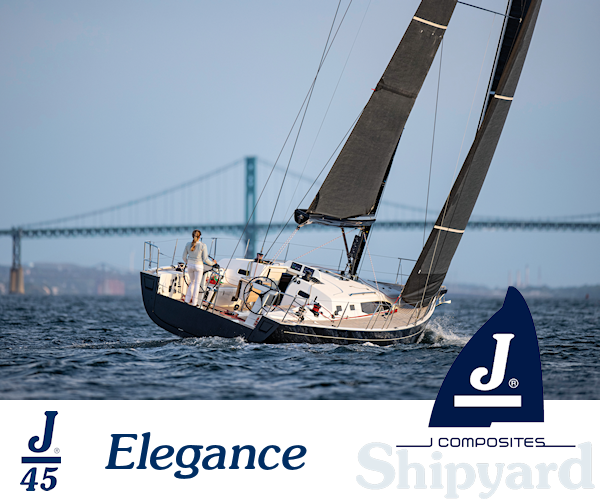
Relative claims missing schooner crew 'could still be surviving'
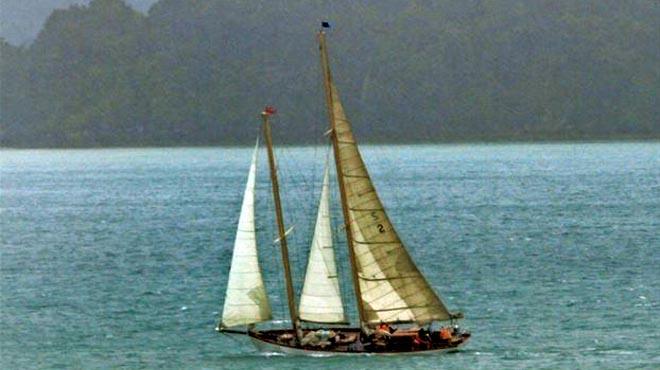
Related Articles

- Cast & crew
- User reviews

In 1989 the trimaran Rose Noelle set sail from Picton, New Zealand, bound for Tonga with four crew. After a freak wave capsized the yacht, they drifted for 119 days before landing on Great B... Read all In 1989 the trimaran Rose Noelle set sail from Picton, New Zealand, bound for Tonga with four crew. After a freak wave capsized the yacht, they drifted for 119 days before landing on Great Barrier Island. In 1989 the trimaran Rose Noelle set sail from Picton, New Zealand, bound for Tonga with four crew. After a freak wave capsized the yacht, they drifted for 119 days before landing on Great Barrier Island.
- John Glennie
- Stephanie Johnson
- Dominic Purcell
- Peter Feeney
- 28 User reviews
- 3 Critic reviews

Top cast 17

- TV Reporter
- All cast & crew
- Production, box office & more at IMDbPro
More like this

Did you know
- Trivia This movie is also know titled "Stranded".
[first lines]
Jim : [narrating] The rogue wave came out of nowhere. A forty foot wave of solid water hit us like a freight train, and was gone before we knew it.
- Connections References Jaws (1975)
- Soundtracks Six Months In A Leaky Boat Written by Tim Finn (as T. Finn) (Mushroom Music)
User reviews 28
- Apr 5, 2021
- How long is Abandoned? Powered by Alexa
- March 17, 2021 (Italy)
- New Zealand
- Making Movies
- See more company credits at IMDbPro
Technical specs
- Runtime 1 hour 26 minutes
Related news
Contribute to this page.

- See more gaps
- Learn more about contributing
More to explore
Recently viewed.

IMAGES
COMMENTS
Rose-Noëlle was a trimaran that capsized at 6 AM on June 4, 1989, in the southern Pacific Ocean off the coast of New Zealand. [1] [2] Four men (John Glennie, James Nalepka, Rick Hellriegel and Phil Hoffman) survived adrift on the wreckage of the ship for 119 days.[3]Landing place of the Rose-Noëlle at Little Waterfall Bay on Great Barrier Island, New Zealand
The Rose-Noelle story was a ripper. Three days into its voyage, at 6am on June 4, 1989, a massive wave - so big it roared like a freight train - came out of the darkness and flipped the 6.5 tonne ...
If the tale is to be believed, the trimaran Rose-Noelle was flipped over on June 4 by a huge wave in a 60-knot gale three days out of New Zealand's South Island. It made land on Sept. 30.
The 41-foot-long trimaran Rose-Noëlle, which had been lying beam-on to the seas, was engulfed by an avalanche of white water, pitched to 90 degrees then flipped upside down. Inside the yacht it was as if a house had been inverted in an earthquake. There were shouts amid the darkness as the crew struggled to free themselves from the debris that ...
While docked behind the Rose Noelle in Picton, the opportunity arose for Phil, who was a builder, to join the boat's captain, John Glennie, on a voyage to Tonga. "Phil was always looking for adventure," Karen explains. "He expressed interest and was soon sailing the seas with John and two men, Rick and Jim, who John found by placing an ...
Television (Full Length) - 1996. This documentary tells the story of four men men who survived 119 days adrift at sea in an upturned trimaran. John Glennie's boat Rose-Noëlle capsized in the Pacific in June 1989, and washed up four months later on Great Barrier Island. Director Mark Beesley mixes raw interviews and spare reenactments to ...
When their upturned trimaran Rose Noelle washed up on New Zealand's Great Barrier Island in October 1989, these four men were in good enough shape that they had a tough time convincing authorities that they had indeed been adrift for 119 days.
My 40ft trimaran Rose-Noelle capsized in a never-never land where no hope of survival existed. No ships, no planes and no fish. It's a marine desert. Normally no one escapes capsizing down there. There virtually is no hope. On top of that, no one knew where my three-crew members and me were. We spent the next four months drifting in what
Rose Noelle skipper John Glennie sits among wreckage of his trimaran with some of the items recovered along the rugged south-eastern coast of Great Barrier Island. Photo / Paul Charman. Many odd ...
The. Rose Noelle. inquiry. In 1989 the trimaran Rose Noelle and its crew of four washed up on Great Barrier Island (Aotea) after four months adrift in the South Pacific. As this clip shows, questions were asked about the effectiveness of what were then known as Class III search and rescue operations. Signals from the vessel's emergency beacon ...
Police searched the fragmented wreckage of the Rose-Noelle, named after Glennie's one-time sweetheart, to try and find the logbook. Debris from the trimaran is scattered over the island's rocks.
Glennie told reporters all four men felt the lack of exercise more than the lack of food during their four months adrift on the trimaran Rose-Neolle and he had lost 21 pounds during the ordeal.
Capsized: Jim Nalepka's Epic 119 Day Survival Voyage Aboard the Rose-Noelle [Callahan, Steven] on Amazon.com. *FREE* shipping on qualifying offers. Capsized: Jim Nalepka's Epic 119 Day Survival Voyage Aboard the Rose-Noelle ... (April - August 1989) struggle of Jim Nalepka and three other crew to survive on their capsized trimaran adrift in the ...
In May 1989, John Glennie docked at Picton in the South Island of New Zealand, where his Rose-Noëlle was preparing for a Tonga and needed a crew. A few loca...
However the trimaran yacht Rose Noelle capsizes when it is hit by a rogue wave and fills with water, trapping the crew in a small space remaining above the ocean. After 119 days adrift, the currents carriy Rose Noelle slowly all the way around New Zealand where the yacht washes ashore on the Great Barrier island.
After 119 days at sea living in the tiny, waterlogged aft cabin of the upturned trimaran Rose-Noelle, John Glennie and his three crew clambered ashore at Little Waterfall Bay on the rugged remote southeast coast of Great Barrier island. They had set out from Picton on June 1 bound for Tonga. Glennie had vast experience of South Seas sailing ...
The Rose-Noelle story was a ripper. Three days into its voyage, at 6am on June 4, 1989, a massive wave came out of the darkness and flipped the 6.5 tonne trimaran upside down like a bath toy, trapping the four terrified men in the darkness, sea water pouring in through the open hatch.
TIL that 4 sailors survived at sea off the coast of New Zealand for 118 days after their trimaran, the Rose-Noelle, was upturned by a rogue wave. They cut holes in the hull, collected rainwater, and eventually caught and cooked fish. They were in such good shape upon return many doubted their story.
The Rose Noelle inquiry. In 1989 the trimaran Rose Noelle and its crew of four washed up on Great Barrier Island (Aotea) after four months adrift in the South Pacific. As this clip shows, questions were asked about the effectiveness of what were then known as Class III search and rescue operations. Signals from the vessel's emergency beacon ...
Abandoned: Directed by John Laing. With Dominic Purcell, Peter Feeney, Owen Black, Greg Johnson. In 1989 the trimaran Rose Noelle set sail from Picton, New Zealand, bound for Tonga with four crew. After a freak wave capsized the yacht, they drifted for 119 days before landing on Great Barrier Island.
On 4 June 1989 the trimaran Rose-Noëlle capsized some 140 miles east of the Wairapa coast of New Zealand. The crew of four spent 118 days adrift inside the upturned hull. The incident subsequently became a source of some controversy, leading to an investigation by the New Zealand Ministry of Transport. John Glennie's exclusive story was first ...
In an almost incredible tale of survival, the four crew of the shipwrecked trimaran Rose-Noelle were found alive after 119 days at sea. The Rose-Noelle had been flipped by a massive wave three days into a voyage to Tonga in June. The signal from their EPIRB locator beacon had not been picked up by the time it stopped working a week later. Search and Rescue officials concluded that something ...